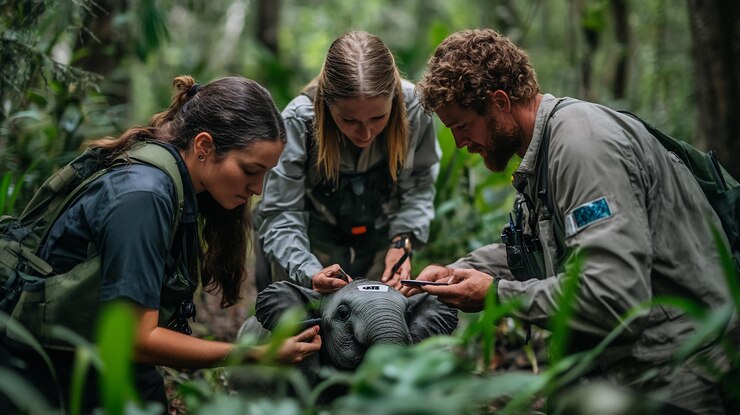Species recovery programs are an essential part of world efforts to preserve variety and stop the extinction of species. These programs aim to revive and shield species at risk because of environmental loss, global climate change, illegal search, and other human activities. By specializing in the survival of those species, recovery programs help maintain ecological balance and ensure that future generations will relish the wealthy diversity of life on Earth. During this diary, we will explore the importance of species recovery programs, highlight winning examples, and discuss the challenges and methods concerned with protecting species.
What Are Species Recovery Programs?
Species recovery programs are scientifically designed initiatives geared toward restoring species’ populations and raising their survival probabilities. These programs will involve a range of ways, together with home ground restoration, captive breeding, genetic management, presentation into the wild, and observance of populations. The final goal is ensuring species thrive in natural habitats without constant human intervention.
Species recovery programs are essential because they supply species with the most effective probability of avoiding extinction. Several species are unit on the brink of disappearing thanks to threats like deforestation, poaching, and temperature change. Recovery programs are designed to reverse these trends and provide long-term solutions to these species’ challenges.
Why Are Species Recovery Programs Important?
The importance of species recovery programs cannot be overdone. These initiatives have comprehensive edges for ecosystems, human societies, and, therefore, the planet as a whole. Here are a number of the explanations why species recovery programs are unit thus critical:
Maintaining Biodiversity:
Biodiversity is the foundation of healthy ecosystems. Every species plays a task in its scheme, contributing to the balance and stability of the surroundings. Once a species goes extinct, it will cause an issue that disrupts different species and, therefore, the scheme as a full. Recovery programs facilitate maintaining diversity by ensuring species survive and thrive.
Ecosystem Services:
Many species contribute to the supply of essential scheme services, like fertilization, seed diffusion, and tormenter management. The loss of those species will result in declining these services, which may negatively affect agriculture, water quality, and essential resources. By restoring species, recovery programs facilitate preserve these scheme services.
Cultural and Economic Value:
Many species have cultural significance or offer economic advantages through commercial enterprise, agriculture, or drugs. Protecting these species will facilitate the preservation of cultural heritage and generate economic opportunities for communities that depend upon life, commercial enterprise, or different natural resources.
Prevention of Extinction:
The most obvious good thing about species recovery programs is the bar of extinction. By specializing in the foremost vulnerable species, recovery programs offer them a fighting probability to improve from extinction and regain a healthy population.
Key Strategies in Species Recovery Programs
Species recovery programs use a mix of ways to deal with the challenges featured by species. Some of the foremost common ways include:
Habitat Restoration:
One of the foremost necessary aspects of species recovery is environmental restoration. Several species are unit in danger due to their habitats being destroyed or altered by human activities. Recovery programs specialize in restoring these habitats by planting native vegetation, making protected areas, and reducing human activities that negatively affect the atmosphere.
Captive Breeding:
Captive breeding programs’ area units are used once the species’ population’s area units are too tiny or fragmented for a natural copy to succeed. By breeding species in controlled environments like zoos or breeding centres, scientists will ensure the survival of genetic diversity and prepare the species for introduction into the wild.
Reintroduction Programs:
When a species has been successfully bred in captivity, successive steps usually present them in their natural environs. Introduction introducing programs facilitates the establishment of independent populations within the wild. This method needs careful designing, monitoring, and support to confirm that the species will survive and thrive in their new atmosphere.
Genetic Management:
Maintaining genetic diversity is crucial for the prolonged survival of species. Genetic management ensures species have a healthy cistron pool, which is essential for their ability and resilience to environmental changes. Programs could use tools like genetic testing and crossbreeding to manage genetic diversity and forestall coupling.
Monitoring and Research:
Practical observation and analysis are essential for the success of species recovery programs. By chasing the progress of populations, scientists will confirm which ways are operating and require adjustment. In progress, analysis helps determine new threats and inform recovery efforts.
Success Stories: Species Recovery in Action
Over the years, varied success stories have highlighted the effectiveness of species recovery programs. Here square measure many notable examples:
The American state Condor:
The Gymnogyps California is one of the foremost known samples of a booming species recovery program. By the nineteen-eighties, only twenty-seven people remained in the wild. A captive breeding program was established. After years of careful breeding, monitoring, and presentation efforts, the population of American state condors has steadily enhanced, and there are currently over four hundred people within the wild.
The Arabian Oryx:
Once thought extinct in the wild, the Arabian pasang has created a stimulating comeback due to recovery programs. Within the Nineteen Seventies, a small population was reintroduced into the wild, and today, there are over one 000 Arabian oryxes living in their native desert habitats.
The Kakapo Parrot:
The Kakapo parrot, native to New Zealand, is critically vulnerable, with only around two hundred people remaining. Intensive recovery efforts, surrounding protection, captive breeding, and a predator-free setting have helped the Kakapo population recover. Today, the species is slowly, however steady, increasing in range.
Challenges in Species Recovery
While species recovery programs have achieved notable success, there are still vital challenges that have to be overcome:
Funding and Resources:
Species recovery programs require substantial monetary and logistical resources. However, several underfunded programs make it troublesome to keep up with long efforts.
Habitat Loss:
Even with recovery programs in situ, environmental loss remains one of the foremost vital threats to species. In progress, conservation efforts should target environmental protection and restoration to ensure that recovery efforts aren’t undermined.
Climate Change:
Climate change poses a haphazard challenge to species recovery. Rising temperatures, shifting weather patterns and ever-changing ecosystems will hinder the success of recovery programs.
Human-Wildlife Conflict:
In some cases, species recovery efforts will conflict with native communities or industries. For example, reintroducing predators into areas with farm animals will produce tensions. Managing these conflicts is a vital facet of recovery efforts.
Conclusion: The Future of Species Recovery Programs
Species recovery programs are a critical part of global conservation efforts and play a polar role in preventing the extinction of vulnerable species. Whereas challenges remain, the success stories of species such as the California condor and Arabian pasang demonstrate the potential of those programs to form an actual distinction. The continued support of those initiatives, together with a worldwide commitment to protecting habitats and addressing temperature change, will be crucial for the survival of many species in the future.
Another Exciting Blog: Discover the Profound Effects of Nature’s Sound Therapy







